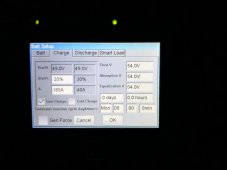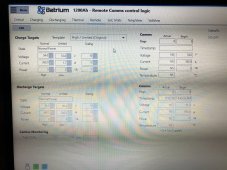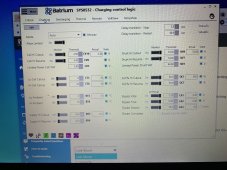Yes you are correct, I have 64 cells, 4 packs of 16 each. I have my max charge set at 360 A in Batrium. I will have to recheck my math but based upon my calculations I am charging at approximately a .32C rating. 360a/1120ah = .3214. Did I miss something or using the wrong calculator?
Currently my charge is 53.8, 50.4 for low and 48 shutdown, aiming for that 90-ish% to 15-ish% range.
I’m playing with my settings to see what changes and also using my volt meter to see how accurately Batrium is reading the batteries.
One thing I have noticed so far, Batrium is sending the charged % to the Sol-Ark. I have noticed that it is not accurate. I know you can go into Batrium and change your percentage number manually. Ive seen an option for recalibration of percentage charged. I am trying to adjust that recalibration percentage so it will hopefully make the SOC percentage more accurate.
The C rating that is listed for the 280a cells is at the individual cell and not the pack. So basing it against the overall pack size (1120ah) would be incorrect I believe since the voltages are not the same, 3.2 vs. 51.2v. You need to divide the overall charge by the number of individual cells that make up the battery since that is the amount of charge each cell would "see". Can be confirmed by measuring the current with a meter clamped over a bus bar (if it fits). ex. a 300a total charge rate from the sol-ark does not mean each cell is seeing 300a but a fraction of that based on the number of cells. 300/64 = 4.7a. You use that amount to calculate the c-rate that each cell is seeing, 4.7/280 or .017C. To put it another way you would need a charge of 17920a to reach the 1C rating that these batteries can support (280*64) !







